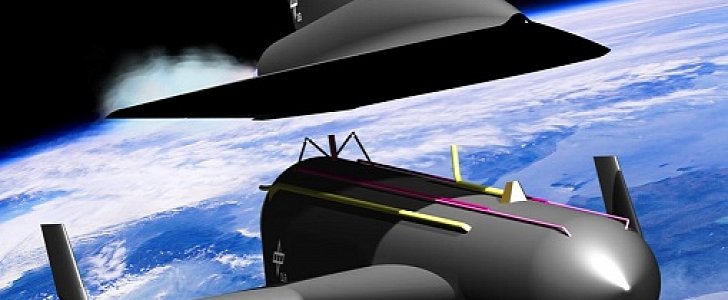Ever since Rosetta’s landing on a comet mission happened, we haven’t heard much from Europe in terms of space exploration. So we figured there must be something cooking on the old continent. It turns out we were right, as we just stumbled upon a new German, hypersonic aircraft concept that is currently in R&D.
Just in case you missed the news, we’ll mention that Rosetta is a robotic space probe built and launched by the European Space Agency. On November 12 last year, the mission performed world's first successful landing on a comet. It's a hell of a big deal, to be honest, but like any such discovery it needs time to grow in prominence.
Time is also what this hypersonic aircraft needs to get into production. More precisely, we are talking about a new kind of high-speed transport based on a two-stage Reusable Launch Vehicle (RLV) that has been proposed by German Institute of Space Systems (DLR) under the name SpaceLiner.
We’re looking at some impressive figures here, with ultra long-haul distances such as Europe-Australia being flown in 90 minutes. Another example would be an intercontinental route between Europe and North-West America covered in a little over an hour. How about that for visiting Paris, right?
Apparently, the SpaceLiner has been in the works for about ten years now. Different configurations in terms of propellant combinations, staging, aerodynamics shapes, and structural architectures have been analyzed throughout the years.
Moreover, the concept also envisions the passenger cabin to work as an autonomous rescue capsule that can be separated from the vehicle in case of an emergency, allowing passengers to return safely to Earth. Here's more about the project:
“After engine cut-off, the orbiter stage is to enter a high-speed gliding flight phase and be capable of traveling long intercontinental distances within a very short time. Altitudes of 80 kilometers and Mach numbers beyond 20 are projected, depending on the mission. Flight times of the SpaceLiner from Australia to Europe should take just 90 minutes or no more than 60 minutes on the Europe – California route. Acceleration loads for the passengers on these missions are designed to remain below those of the Space Shuttle astronauts, with a maximum of 2.5 g being experienced during the propelled section of the flight.”
Time is also what this hypersonic aircraft needs to get into production. More precisely, we are talking about a new kind of high-speed transport based on a two-stage Reusable Launch Vehicle (RLV) that has been proposed by German Institute of Space Systems (DLR) under the name SpaceLiner.
We’re looking at some impressive figures here, with ultra long-haul distances such as Europe-Australia being flown in 90 minutes. Another example would be an intercontinental route between Europe and North-West America covered in a little over an hour. How about that for visiting Paris, right?
Apparently, the SpaceLiner has been in the works for about ten years now. Different configurations in terms of propellant combinations, staging, aerodynamics shapes, and structural architectures have been analyzed throughout the years.
All these sound quite impressive, but what exactly are we looking at?
According to DLR, the two-stage, vertical-takeoff configuration concept consists of a large unmanned booster and a manned stage designed for 50 passengers and two crew members. The fully reusable vehicle is accelerated by a total of eleven liquid rocket engines (nine for the booster, two for the passenger stage), which are to be operated using cryogenic liquid oxygen (LOX) and hydrogen (LH2).Moreover, the concept also envisions the passenger cabin to work as an autonomous rescue capsule that can be separated from the vehicle in case of an emergency, allowing passengers to return safely to Earth. Here's more about the project:
“After engine cut-off, the orbiter stage is to enter a high-speed gliding flight phase and be capable of traveling long intercontinental distances within a very short time. Altitudes of 80 kilometers and Mach numbers beyond 20 are projected, depending on the mission. Flight times of the SpaceLiner from Australia to Europe should take just 90 minutes or no more than 60 minutes on the Europe – California route. Acceleration loads for the passengers on these missions are designed to remain below those of the Space Shuttle astronauts, with a maximum of 2.5 g being experienced during the propelled section of the flight.”
